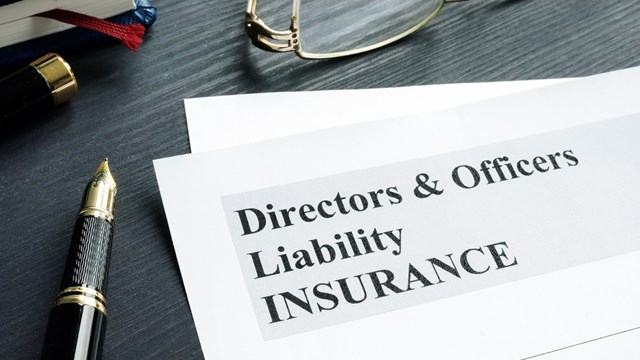For any condominium or community association, there are certain types of insurance that HOAs cannot live without. Generally those include: property, liability, umbrella, D&O (with employment practices liability (EPL) insurance embedded in the coverage), fidelity, equipment breakdown coverage or more commonly called boiler and machinery (B&M), workers compensation, disability coverage, and when applicable, environmental coverage.Homeowners should also purchase their own insurance to protect their valuables and the contents inside the residence.
Keep It Covered
According to Cheryl Rhine, CIC and Debbie Pasquariello, CIC, CIRMS, with BHB Insurance Services, the basics are as follows.Minimum legal requirements are outlined in the association’s documents in the master deed and the bylaws under duties and responsibilities of the board. In the documents, there is also generally a provision for “other insurance” the the board "deems necessary,” which will enable to board to purchase broader coverage should they choose to. These coverages should always be discussed and reviewed with a professional insurance agent that specializes in community association insurance, say Rhine and Pasquariello.
These are the main requirements for any HOA:
Property:Your insurance company may provide an appraisal based on a software program such as Marshall & Swift, or the association may retain the services of a licensed insurance appraiser to determine current replacement cost. If the association’s policy provides "guaranteed replacement" cost coverage, there is little need for concern regarding the limit. If the association has a property loss that is underinsured then they would special assess each unit owner based on their proportionate share of ownership, for the uninsured portion of the loss. The unit owner would in turn submit the claim to their personal insurance carrier for coverage under “loss assessment.” There are other coverages of concerns as well like equipment and machinery, flood, earthquake, business interruption/loss of use. It is important to discuss all these coverages with the association's insurance agent.
Liability:Unfortunately there is no guideline on what limit of liability is enough. The board should always purchase an "umbrella policy." In the current marketplace $15 million, $25 million and $50 million limits are very affordable.
Fidelity Bond:Recommend no less then full annual reserves plus three months of operating costs as required by Fannie Mae or as required in the association documents as some may require full annual budgets to be insured. Associations with the builder in control will have the full annual budget requirement as well.
D&O:Primary limit on the Directors & Officers insurance of at least $1 million with an umbrella policy that is in excess of the D&O. There are exclusions on the D&O policy for, failure to provide adequate insurance, failure to provide flood and earthquake coverage, property damage exclusion and bodily injury exclusion. The D&O is not a viable place to look for coverage in the event of a shortfall of property or liability coverages.
Workers Compensation:As required by New Jersey law.
As for the individual homeowner, Rhine and Pasquariello say that the "individual insurance requirement needs will vary depending on the scope of coverage that is provided by the association's master policy."
The bare minimum, they add, that an individual needs to have is an HO6 (unit owner's policy). This would cover their personal liability, personal property, additional living expense, loss assessment, and any other personal items that may need to be scheduled. The one coverage that will vary are the upgrades made to the unit (also called improvements and betterments) and whether you will need to go as far as to insure from the sheetrock in. If the association is a homeowners association versus a condominium association, the homeowner may have to purchase an HO3 policy (homeowner’s policy) which will also include coverage for the dwelling as well as other things mentioned above.The extent of the master policy's coverage should always be provided to the unit owners so they can work with their personal agents to have the right insurance coverage.
Ed Mackoul, president of Mackoul & Associates, Inc., which has offices in New York City, Long Island, New Jersey and Florida, thinks that equipment breakdown insurance or B&M, which will cover all the machinery in the building in case of a mechanical breakdown, is also vitally important for HOAs to consider. Also don't forget about D&O.“Directors & Officers liability becomes more important here," says Mackoul, "because statistics show that 70 percent of all D&O claims are lodged in five states (New York, New Jersey, Texas, California and Florida).”
As for the individual unit owner's liability, Mackoul advises that they should carry a minimum of $25,000 of what’s called improvements and betterments coverage. "The unit owners are basically responsible for certain things in any unit: any improvements they made: the fixtures, things like that. If they'd gone in and upgraded the bathroom, the kitchen, it could be a whole lot more."
Enough or Not Enough
Who's responsible for what? The basic premise is thatanything inside the walls of the unit normally falls to the responsibility of the shareholder and outside the walls falls to the board or association.
When deciding on insurance needs, a condo or co-op should think about more than deciding what is adequate and affordable coverage.
"The condo association should cover property insurance with limits enough to rebuild the condo building in the event of a loss such as a fire," says John O'Connor, vice president of underwriting for Travelers Insurance.
"They should also carry generally liability insurance with appropriate limits to protect the association from lawsuits arising from its premises," and of course, they should have D&O, he adds.
In addition to worrying about fire coverage, Mackoul adds that water damage from burst pipes, wind and rain is also a common coverage. He cites the fact that every policy has exclusions. Typically the most common exclusion in every policy is normal wear and tear, it’s a maintenance issue, he says.
There are some condos that try to do the bare minimum and even scale back their insurance from time to time because the board members think that they won’t need certain types of insurance. That could be a serious mistake, brokers say.If an association decides to skimp on their insurance coverage, major problems could develop.
"The risks of cutting back coverages to save premium dollars are that in the event of a loss, there may be inadequate limits available to rebuild the structure," says O'Connor. "That could mean uncovered, out of pocket additional expenses to the association."
If an association didn't have the proper D&O coverage, for example, Mackoul says, they still would have to respond to a lawsuit alleging wrongdoing no matter how frivolous the claim.
"Every insurance broker can sell you a policy but there are brokers who specialize in it," advises Mackoul. "And if you deal with them, they’ll give you the guidance that you need and recommend what coverage that you should have. For someone who doesn’t specialize in it, they may not have this knowledge. You wouldn’t go to a podiatrist if you needed brain surgery. It’s the same thing with insurance. Number two is don’t strictly focus on price. Yes, with the way the economy is, everyone wants to save money. But sometimes you simply can’t skimp. If you skimp on something like directors and office liability insurance. You may have $1,000 you’ll save this year, but it's going to cost a lot more next year when there’s a lawsuit that’s not being covered. Legal fees can be very expensive. Don’t just strictly focus on price."
Residents' Responsibility
Generally, the association's policy and the homeowner's policy should be as comprehensive as possible so that they work together to provide maximum coverage, says Mackoul. A homeowner's HO6 policy not onlycoversdamage to improvements but additions and alterations of your unit are covered. Your condo insurance policy also covers your belongings and the structural parts of the building that you own. Italso covers things outside the building, so if your children are playing in the park and they hit someone with a bat, or your dog bites someone, personal liability covers that, Mackoul says.
Pasquariello and Rhine recommend that both an association and a homeowner should keep abreast of changes in coverages and conduct an annual insurance review.
Remember, says Mackoul, property value and replacement value are two different things. While property values may have dropped, replacement values have actually gone up. The cost of brick, and wood and steel is still increasing so the cost to replace the building has gone up.An insurance broker will look at your total square footage, look at the value of your building and tell you if you are in the low end or high end but only appraisers can determine if a building has adequate coverage.“As a building gets older, some insurance companies offer inflation guards that may increase 2-8 percent every year,” Mackoul says. “But the coverages never change unless requested.”
The bottom line is simple. Industry experts recommend comparing carriers and finding one that offers the best general policy. Also, check for better rates every few years—becausestanding still with one company may keep you missing out on savings.
Keith Loria is a freelance writer for The New Jersey Cooperator and other publications. Additional reporting by David Chiu.







Leave a Comment